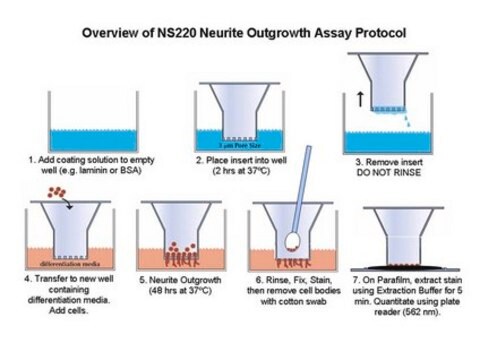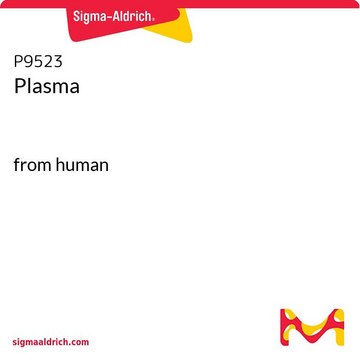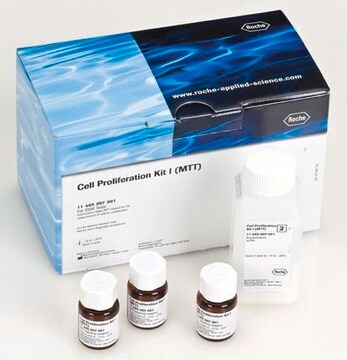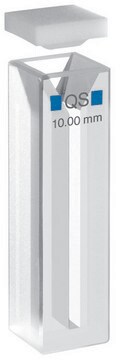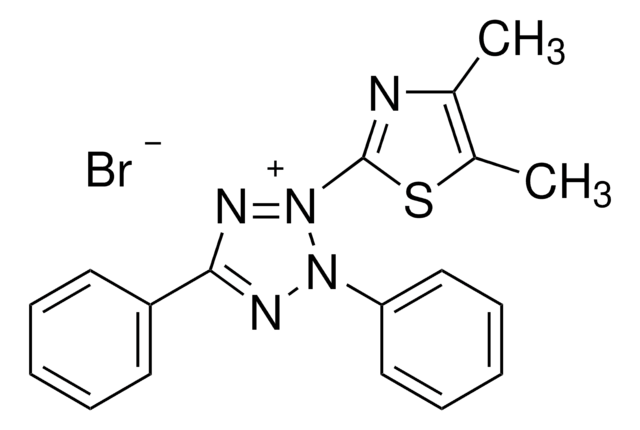NS225
Neurite Outgrowth Assay Kit (1 µm)
The NS225 Neurite Outgrowth Assay Kit (1 μm) is based on the use of Millicell cell culture inserts (chambers) containing a permeable membrane with 1 μm pores at the base.
Synonim(y):
Test wzrostu neurytów
About This Item
Polecane produkty
Poziom jakości
reaktywność gatunkowa (przewidywana na podstawie homologii)
all
producent / nazwa handlowa
Chemicon®
metody
cell based assay: suitable
metoda wykrywania
colorimetric
Warunki transportu
wet ice
Opis ogólny
Zastosowanie
Komponenty
Neurite Stain Solution: (Part No. 90242) One 20 mL bottle.
Neurite Stain Extraction Buffer: (Part No. 90243) One 20 mL bottle.
Neurite Outgrowth Assay Plate: (Part No. 2007255) Two 24-well plates.
Cotton Swabs: (Part No. 10202) 50 swabs.
Forceps: (Part No. 10203) One each.
Przechowywanie i stabilność
Informacje prawne
Oświadczenie o zrzeczeniu się odpowiedzialności
Hasło ostrzegawcze
Danger
Zwroty wskazujące rodzaj zagrożenia
Zwroty wskazujące środki ostrożności
Klasyfikacja zagrożeń
Eye Irrit. 2 - Flam. Liq. 2
Kod klasy składowania
3 - Flammable liquids
Certyfikaty analizy (CoA)
Poszukaj Certyfikaty analizy (CoA), wpisując numer partii/serii produktów. Numery serii i partii można znaleźć na etykiecie produktu po słowach „seria” lub „partia”.
Masz już ten produkt?
Dokumenty związane z niedawno zakupionymi produktami zostały zamieszczone w Bibliotece dokumentów.
Produkty
Optimized cell based neurite outgrowth assays and reagents to study neuron function and development.
Zoptymalizowane testy wzrostu neurytów oparte na komórkach i odczynniki do badania funkcji i rozwoju neuronów.
Nasz zespół naukowców ma doświadczenie we wszystkich obszarach badań, w tym w naukach przyrodniczych, materiałoznawstwie, syntezie chemicznej, chromatografii, analityce i wielu innych dziedzinach.
Skontaktuj się z zespołem ds. pomocy technicznej